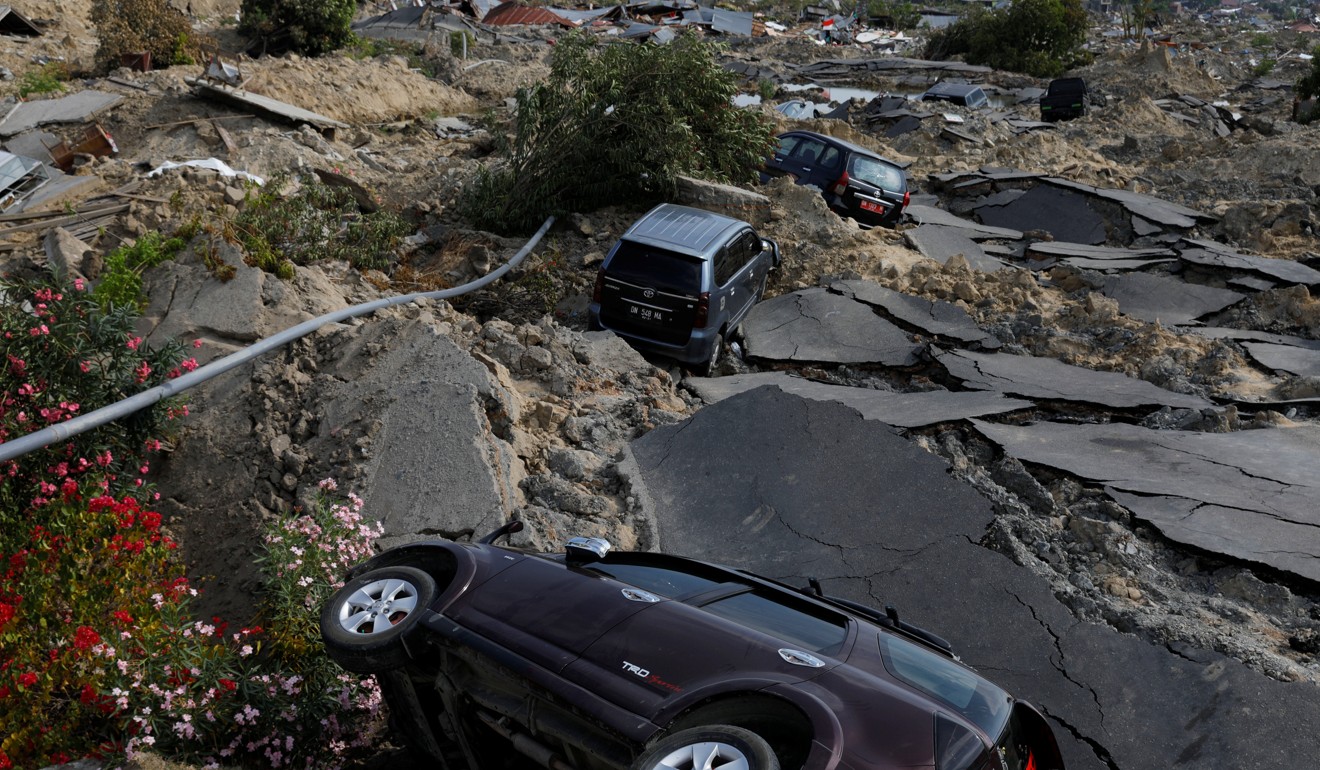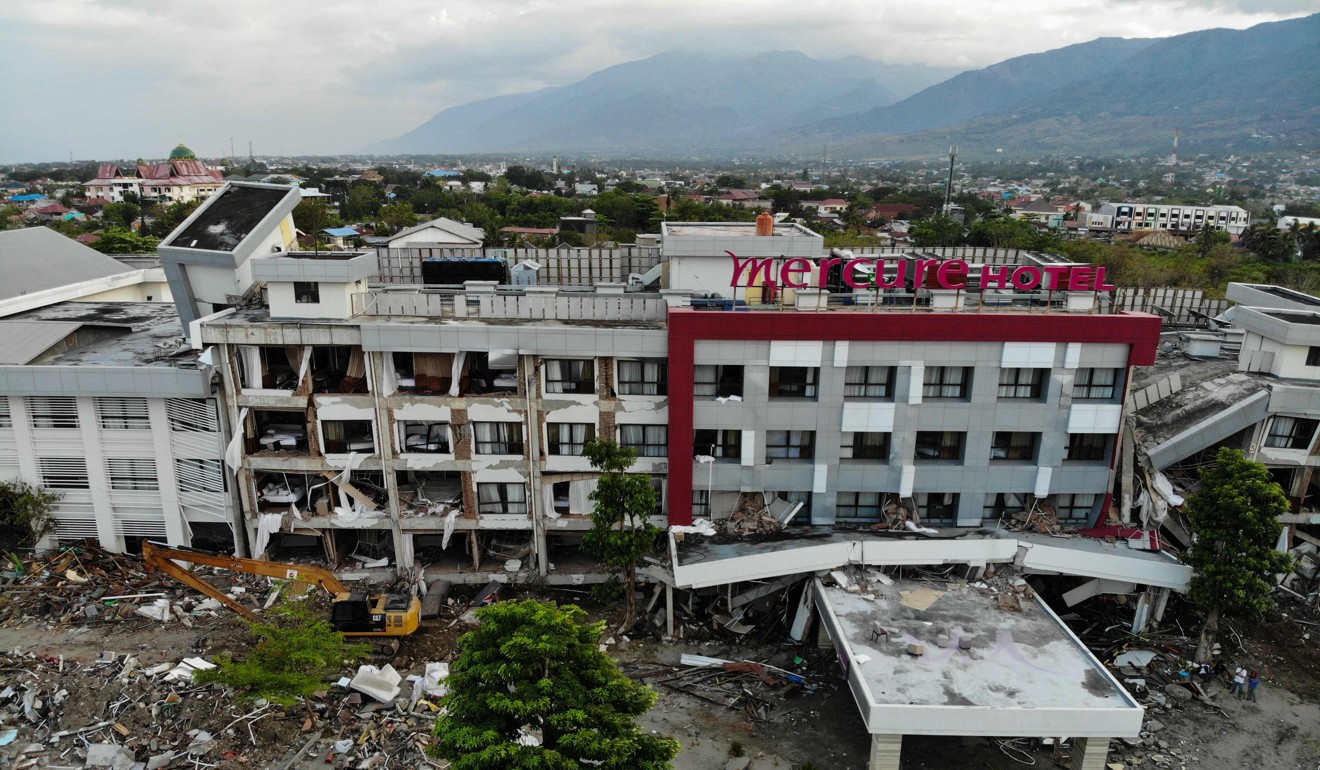
Services return to disaster-hit Indonesian city as fate of remote communities remains unclear
Aid workers struggle to reach outlying areas as death toll reaches more than 1,400
Some services began returning to normal in Indonesia’s quake and tsunami stricken city of Palu on Thursday, but the fate of many thousands of people in outlying districts remained unknown nearly a week after the disaster struck.
The small city of 370,000 people has been the focus of the aid effort launched after last Friday’s 7.5 magnitude earthquake and tsunami on the west coast of Sulawesi island.
Volcano erupts on Sulawesi as time runs short to rescue survivors of earthquake and tsunami
International help for survivors has gathered pace, but communities in more remote areas have been cut off by broken roads, landslides and crippled communications, leaving people increasingly desperate for basic needs as aid has only just begun to trickle through.
By Thursday, the official death toll stood at 1,424, but it is widely expected to rise as most of the dead accounted for have been from Palu, while figures for remote areas are trickling in or remain unknown.
“There are so many challenges with this disaster, it’s never been so bad,” said Frida Sinta, an aid volunteer trying to get help out to fellow residents of Palu.

The city, 1,500km (930 miles) northeast of Indonesia’s capital, Jakarta, has teetered close to chaos this week, with outbreaks of looting, but a recovery was evident as some shops and banks reopened and a major mobile phone network was back in operation.
Orderly queues formed at service stations after the arrival of fuel shipments and the power came back on, at least in parts of the city.
The improvements are helping with the aid effort.
“We carry whatever we can by car or motorbike within the city wherever we can. But not yet to the most inaccessible places,” Sinta said.
Indonesia quake survivors desperate for help as death toll climbs
State port operator Pelindo IV said Palu’s port, which was damaged by the quake and tsunami, was open, though a Reuters reporter in the city said she had not seen any shipping activity.
Altogether, the badly affected areas in the disaster zone include some 1.4 million people.
Rescuers are pushing into outlying districts, where residents have said they have been scavenging for coconuts, bananas and cassava.
Villagers rushed a Red Cross helicopter that landed near the town of Donggala, northwest of Palu, to distribute bread and other food, a Reuters photographer said.

International aid is beginning to arrive, including supplies from Britain and Australia, after the government overcame a traditional reluctance to accept help from abroad.
The United Nations announced an allocation of US$15 million on Wednesday while the International Federation of Red Cross and Red Crescent Societies said it was appealing for 22 million Swiss francs (US$22 million).
The United States had provided initial funding and disaster experts and was working to determine what other help could be given, the State Department said.
Death toll from Indonesia earthquake and tsunami tops 1,200
Indonesian Central Bank Governor Perry Warjiyo played down the impact of the disaster on Southeast Asia’s biggest economy.
“This is really a challenging and difficult time for Indonesia and for all of us, but we are united and we stand strong,” he told a briefing of the Jakarta Foreign Correspondents Club late on Wednesday.
Straddling the seismically active Pacific Ring of Fire, Indonesia has long been vulnerable to quakes and tsunami.

In 2004, a quake off Sumatra island triggered a tsunami across the Indian Ocean that killed 226,000 people in 13 countries, including more than 120,000 in Indonesia.
But safety measures implemented after that disaster, including tsunami warning systems, failed on Friday.
A network of tsunami-detecting buoys has been out of action since 2012. President Joko Widodo has ordered it be repaired and maintained.

